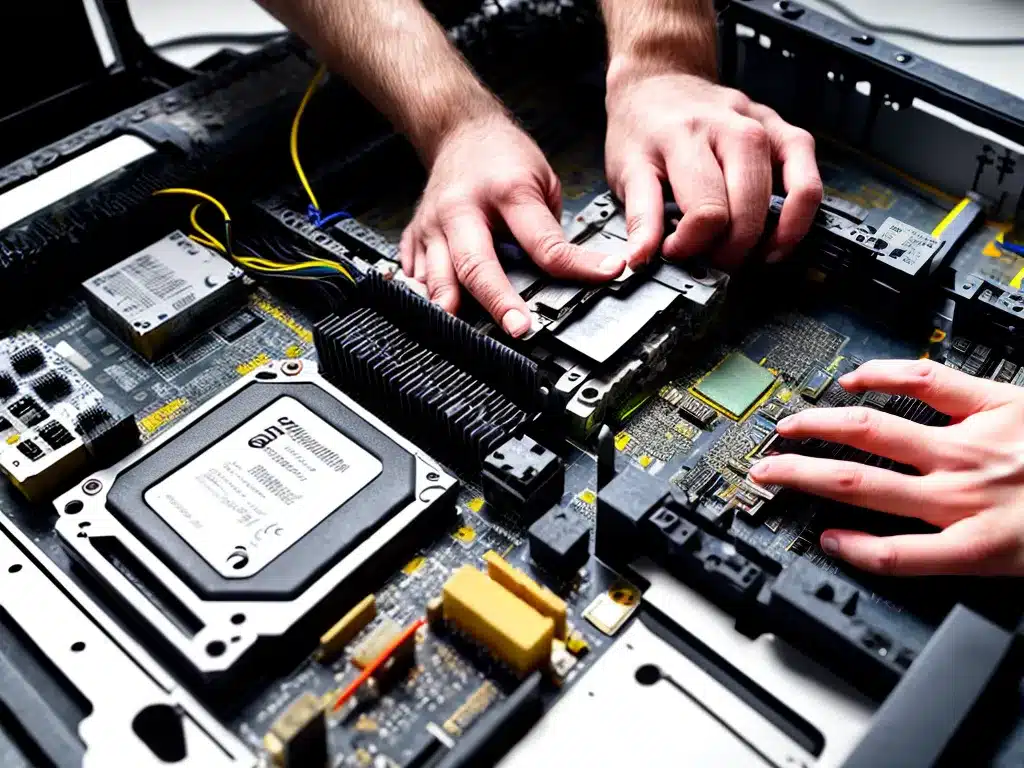
Introduction
RAM (Random Access Memory) modules are an essential component in computers and other devices. They temporarily store data that the CPU needs to access quickly. Like any other hardware component, RAM modules can fail or become faulty over time. When this happens, various issues can occur, like random crashes or freezing. Thankfully, repairing faulty RAM is possible in many cases. This guide will cover the basics of troubleshooting and repairing faulty RAM modules.
Troubleshooting RAM Issues
Here are some tips on identifying potential RAM issues:
-
Computer randomly freezing or crashing – This is one of the most common symptoms of a RAM problem. Faulty RAM can cause random errors that lead to crashes.
-
Errors on boot or when launching programs – If you see blue screen errors or error messages when booting up or opening programs, RAM could be the culprit. Faulty modules can cause boot failures or crashes during program launches.
-
Corrupted data – With bad RAM, data can become corrupted as it’s written to or read from memory. You may notice files, images, or other data getting scrambled or corrupted randomly.
-
High memory usage – RAM issues can cause memory usage to spike, slow down your system, and trigger crashes, even if you don’t have many programs open.
-
Beeping sounds – Some PCs beep in specific patterns to indicate hardware issues like RAM failure. Refer to your motherboard manual to diagnose beep codes related to memory errors.
Diagnosing RAM Issues
To confirm you have a RAM problem, there are some diagnostic steps to take:
-
Check for error logs – System logs or dump files may show memory errors.
-
Run memory test software – Use built-in utilities like Windows Memory Diagnostic or third-party tools like MemTest86 to thoroughly test your RAM. Errors indicate faulty modules.
-
Inspect physically – Open up your machine and check for any visible issues on the RAM sticks like chips coming loose. Reseat modules to ensure proper connections.
-
Test with known good RAM – Swap suspect RAM with a stick you know works properly. If issues disappear, it confirms the original RAM is bad.
Fixing RAM Issues
If testing confirms a RAM module is faulty, here are some steps to try:
1. Reseat RAM modules
Open up your computer and remove the suspect RAM stick(s). Carefully clean the gold connectors with a soft pencil eraser, then reinsert the module(s) firmly back into the slot. Ensure they snap fully into place. Reseat firmly. This can fix some connectivity issues caused by dirt or oxidation on the pins.
2. Replace RAM
If reseating doesn’t help, you will likely need to replace the faulty RAM sticks with new ones. Match the type (DDR2, DDR3, etc), speed, size, and voltage specifications as closely as possible. Consult motherboard documentation to ensure compatibility. Install into the appropriate slots.
3. Update BIOS, drivers, and OS
Outdated firmware and software can sometimes cause RAM compatibility issues that manifest as faults. Update your system BIOS, chipset drivers, and operating system after installing new RAM. Keeping software updated avoids conflicts.
4. Test individual sticks
If you have multiple RAM modules installed, remove all but one stick and test for errors. Repeat for each stick individually to identify which one is specifically bad. This method isolates the faulty stick. Replace only what’s needed.
5. Repair with soldering
For advanced users, it may be possible to resolder broken solder joints on the RAM’s circuit board. This requires electronics expertise and specialized tools. A professional repair may be a better option than risking further damage from improper soldering.
Preventing RAM Issues
Here are some tips to help avoid RAM failures down the line:
-
Keep your computer cool and well ventilated to avoid overheating of components.
-
Handle RAM carefully by the edges and avoid static.
-
Keep RAM gold contacts clean.
-
Avoid overclocking RAM beyond specs.
-
Select quality RAM from reputable brands for reliability.
-
Periodically reseat and clean connectors to maintain good connections.
Properly functioning RAM is vital for a stable system. Following these troubleshooting and repair tips can help get faulty modules up and running again. Replacing defective RAM promptly helps prevent further crashes and data loss.












